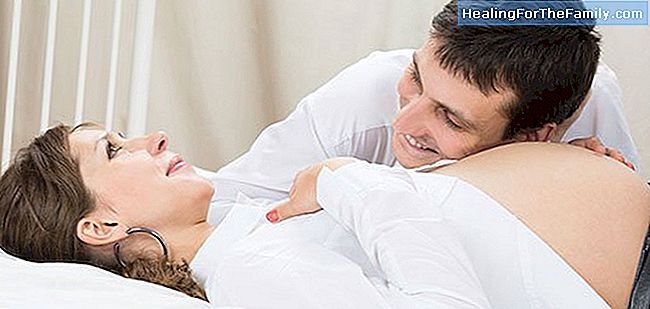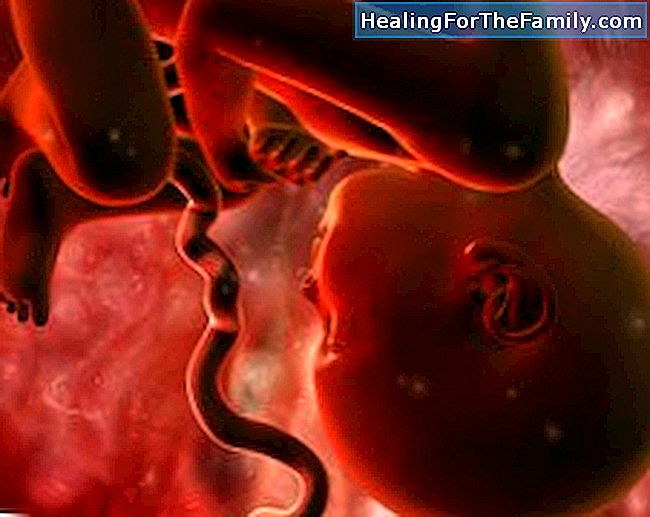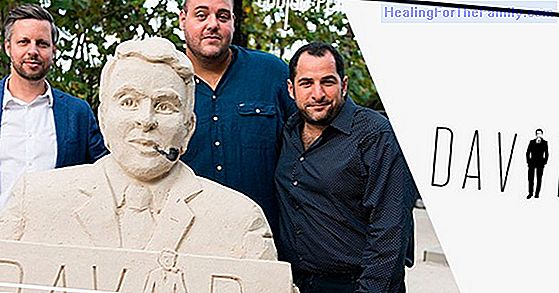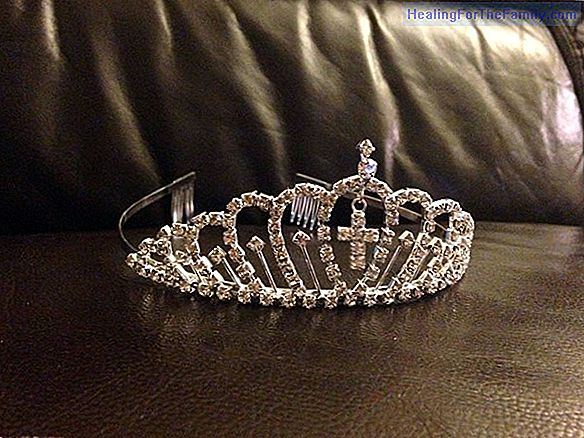35 Weeks of pregnancy
The development of pregnancy week by week has reached week 35 of pregnancy . The baby begins to position itself in cephalic position, which is the most appropriate to cross the birth canal on the day of his birth. The future mother may begin to feel more pressure in the lower part of the pelvis beca
The development of pregnancy week by week has reached week 35 of pregnancy. The baby begins to position itself in cephalic position, which is the most appropriate to cross the birth canal on the day of his birth. The future mother may begin to feel more pressure in the lower part of the pelvis because the fetus is beginning to enter the birth canal between the pelvic bones.
When the baby's head is inserted between the pelvic bones, walking becomes more difficult and even produces cramps and discomfort in the vagina. The genitals can become inflamed and you will surely notice them enlarged. You will feel pressure and feel the need to urinate more often.
Changes in the body of the pregnant woman

In the thirty-fifth week of pregnancy, your uterus, which now reaches below the ribs, has increased about 15 times its original size. The uterus is also pressing on the internal organs, and that's why you have to go to the bathroom so many times.
As you approach the birth date, the soft cartilage of your pelvis begins to expand so that the baby can pass through the vaginal canal more easily. This expansion causes pregnant women to walk swaying.
At 35 weeks of pregnancy the time has come for you to have the recto-vaginal culture, a test used to rule out the presence of the germ Streptococcus Agalactiae, which is part of the vaginal flora of many women without causing any type of symptoms no sign (itching, stinging or increased flow). But if the baby comes in contact with Streptococcus Agalactiae at the time of delivery, it can become infected and suffer from sepsis (generalized infection) or meningitis. Thanks to the recto-vaginal culture it is possible to detect which women are carriers of this germ to give them an intravenous antibiotic at the time of delivery. The test is done by taking samples of tissue with swabs from the entrance of the vagina (called vaginal introitus) and rectum (through the anus).
Development and growth of the baby in pregnancy

In week 35 of pregnancy, the baby weighs about 2,500 grams and measures 45 cm. It is considered that from week 35, the baby's lungs have matured enough to adapt to extrauterine life without respiratory problems. This lung maturity is related to the presence of pulmonary surfactant, which is a liquid secreted in the alveoli and allows them to distend. It occurs when the lung has reached the proper development of its alveoli and the chest wall is also formed. The first respiratory movements appear, which are progressively more rhythmic from week 20.
When delivery occurs prematurely before week 34-35, the newborn has a high risk of suffering a disease or syndrome of neonatal respiratory distress related to the hyaline membrane due to pulmonary immaturity. This disease is responsible for a high number of complications and neonatal deaths, which today are avoided by accelerating pulmonary maturation with corticosteroids in the face of a threat of premature birth. Corticosteroids should be administered for two days before preterm labor.
The suction-swallowing reflex and the mobility of the gastrointestinal tract improve. The reserves of fats and glycogen increase, as does the ossification of long bones and the acquisition of muscle tone. The skin has a pink color and the lanugo begins to fall. The nails reach the edge of the toes and the curvature of the upper part of the auricle begins. The testicles descend from the inside of the body to the sack of the scrotum and the girls' lower lips are very prominent. The development of nervous function continues. The behavior of the baby is increasingly structured, the sleep and wake cycles are well defined.
Health and emotions during pregnancy
As of week 35 of pregnancy you may notice more intensely the numerous musculoskeletal changes that occur in your body due to the progressive increase in weight, the action of hormones and the postural adaptation. The cramps in the legs, the back pain and the feeling of tired and swollen legs.
1. Cramps.They are the result of the compression of some nerve due to the growth of the uterus. To prevent cramps you should walk every day and perform ankle exercises (drawing circles and lines from top to bottom). Instead, to relieve a cramp when it has appeared, stretch the leg and direct the toes upwards. The application of heat or massage can be beneficial.
2. Pain in the back.The curvature of the back is modified, you may have noticed that you walk in another way and all this can cause discomfort at the lumbar level. To minimize them, avoid staying a long time in the same position, either standing or sitting, fold your knees from time to time to unload your back, sit with your back supported on the back, when you lift objects from the floor, do it by bending the knees and Do not back, avoid excessive weight and resort to the massage of a physiotherapist when you feel a lot of pain.
3. Tired and swollen legs.The increase in the size of the uterus compresses some veins. To improve venous return, rest with your legs up, use comfortable and loose clothing, avoiding socks or stockings that produce local compression in the calves, do not stay too long in the same position and finish the shower with cold water from the hip towards the feet.
Diet and diet for the pregnant woman

Although pregnancy is not the ideal time for a diet, you should forget about the myth of 'eating for two'. Each woman needs a different energy intake, but you can increase your caloric intake by 200-300 calories per day, as long as your weight throughout the pregnancy does not exceed the average of 9-15 kilos.
Precisely now that the pregnancy is more advanced and your stomach and intestines are displaced by the increase of the uterus, make only small meals since you will not be able to make a good digestion of a heavy meal. You should eat less, but more often, making five small meals a day instead of the usual three.
Curiosities of week 35 of pregnancy
The time of delivery is approaching and, if you are working, you should take a work break or maternity leave to take care of your baby. This break has an economic benefit, which consists of a subsidy equivalent to 100 percent of the corresponding regulatory base of your salary. In the case of multiple birth, adoption or placement of more than one child, a special allowance will be granted for each child.
The duration of the rest period is 16 uninterrupted weeks, can be extended in case of childbirth, adoption or multiple foster care, disability and hospitalization of the newborn and the right to benefit begins the day of delivery or the day of the start of rest if it is before the birth. In case of adoption or fostering, as of the judicial decision of adoption or of the administrative or judicial decision of fostering.
The rest period can be enjoyed on a full-time or part-time basis. If the father and the mother work, they may opt for the rest period simultaneously or successively.












